Spring 2020 - Archived Newsletter
This online publication is produced each semester to recognize faculty and students and their ongoing work. More information can be accessed by clicking on the topics below.
Faculty Receiving External Awards: October 1, 2019 through March 31, 2020
| PI NAME | SPONSOR | DEPARTMENT/UNIT | PROJECT TITLE |
| Asher Golden, Noah | Spencer Foundation | Teacher Education | Supporting Marginalized Students (re)positioning: Investigating the role of instruction in adolescent learners identity work |
| Bagwell, Jenny | Academy of Orthopaedic Physical Therapy | Physical Therapy | Hip, Trunk, and Pelvic Floor muscles function during and after pregnancy: Implications for low back and pelvic girdle pain and urinary incontinence |
| Baker Prindle, Paul | Pasadena Art Alliance | Kleefeld Contemporary | Neha Choksi: Faith in Friction 2020 PAA |
| Baker Prindle, Paul | The Getty Foundation | Kleefeld Contemporary | Getty Marrow Undergraduate Summer Internship Grant |
| Barjasteh, Ehsan | Boeing Corp | Mechanical and Aerospace Engineering | Thermo-oxidative aging of High Temperature Composites |
| Bird, Mara | UnidosUS | Center for Latino Community Health, Evaluation and Leadership Training | Comprando Sano y Rico |
| Brazier, Chris | Allergan Foundation | Chemistry & Biochemistry | Department of Chemistry/Biochemistry Research Forums |
| Byrnes, Anthony | Arts Council for Long Beach | Theater Arts | Theatre Communications Group Conference |
| Chandra, Shailesh | Caltrans | Civil Engineering & Contruction Engineering Management | The Transformation of Transportation: The Potential of Distributed Ledger Technologies in Transportation Applications |
| Chandra, Shailesh | San Jose State University Research Foundation | Civil Engineering & Construction Engineering Management | Evaluating financing mechanisms and economic benefits to fund grade separation projects |
| D'Anna, Laura | Vietnamese American Cancer Foundation | Center for Health Equity Research | B-Free OC: A Multi-Level Community Collaboration for HBV Care |
| D'Anna, Laura | Community Partners via the California Endowment | Center for Health Equity Research | Building Healthy Communities, Long Bech Evaluation |
| Enriquez, Loretta | US Department of Education | Student Support Administration | Educational Talent Search STEM CAMP |
| Enriquez, Loretta | US Department of Education | Student Support Administration | Educational Talent Search - South Bay STEM CAMP |
| Eriksen, Shelley | Cal OES via Federeal Trus | Human Development | Campus Sexual Assault Program |
| Fata, Frank | Institute of International Education | Comparative Literature & Classics | Language Training Center |
| Fleming, Kirsty | CSU Dominguez Hills via NSF | Faculty Affairs | Leveraging a Faculty Community of Practice Model of Professional Learning to Enhance Diversity, Equity, and inclusion in STEM Teaching, Learning, and Leadership |
| Fraser, Deborah | National Institutes of Health | Biological Sciences | Complement Protein C1q in Atherosclerosis |
| Garcia-Vega, Melawhy | US Department of Agriculture | Health Science | ANDALE Latino Research Training Program |
| Garcia-Vega, Melawhy | City of LongBeach | Health Science | Tobacco Use Prevention and Education among Latinos in Long Beach |
| Ghafoori, Bita | Long Beach Unified School District | Advanced Studies in Education and Counseling | Trauma focused services: A School based approach |
| Golshani, Forouzan | Boeing Corp | COE Administration | Automation Boeing Lab |
| Golshani, Forouzan | Boeing Corp | COE Administration | Boeing Research & Technology Projects 2020 |
| Hagedorn, Klaus | The University Corporation via NSF | Geological Sciences | RUI: Collaborative Research: Defining the biogeochemical context and ecological impacts of submarine groundwater discharge on coral reefs |
| Hagedorn, Klaus | National Science Foundation | Geological Sciences | RUI: Groundwater occurrence and discharge at coral atoll and barrier reef systems |
| Hamilton, John/Scibetta, Dominica | California Student Aid Commission | University Outreach & School Relations | Long Beach Cal SOAP |
| Hanley, Gerry | The William and Flora Hewlett Foundation | Psychology | Historically Black Colleges and Universities Affordable Learning Solutions Summit |
| House-Peters, Lily | Univesity of Calgary | Geography | Incorportating Local & Traditional Knowledge Systems: New Insights for Ecosystem Services & Transdisciplinary Collaborations |
| Hytrek, Gary | Sociological Initiatives Foundation | Geography | Research and Policy: Improving Housing Conditions Among HUD and Low-income Tenants in Long Beach,CA |
| Johnson, Darren | National Science Foundation | Biological Sciences | RUI: Evaluating selection via ocean acidification and evolutionary responses of two coastal fishes |
| Kim, Mimi | Community Partners | Social Work | Strengthening Social Network Responses to Domestic Violence |
| Kim, Mimi | Contra Costa Family Justice Alliance | Social Work | Community Restorative Project |
| Kline Crockett, Megan | California Arts Council | Carpenter Performing Arts Center | Arts Education Exposure |
| Krishnan, Sudha | The University Corporation Northridge via State of California | Accountancy | The CSU 5+ Volunteer Income Tax Assistance Initiative |
| Lanza, Isabella | USC via National Institutes of Health | Human Development | Tobacco Regulatory Science Investigating the Intersections of Products with Diverse Populations |
| Lo, Roger | Wayne State University | Chemical Engineering | New Frontiers of Mechatronics Education for Mobility, Energy, and Product Engineering |
| Malm, Aili | U.S. Department of Justice | Criminal Justice | Using Social Network and Spatial Analysis to Understand and Address Fentanyl Distribution Networks in America’s Largest Port City |
| Malm, Aili | Arizona Board of Regents | Criminal Justice | Tempe First Responder Opiod Recovery Project |
| Maples, Tracy | The Regents of the University of California, Office of the President | College of Engineering Administration | MESA Engineering Programs |
| Maples, Tracy | Antellope Valley College via U.S. Dept. of Education | College of Engineering Administration | Antelope Valley College - Title V grant |
| Marcus, Richard | University of California, Office of the President | International Studies Program | California Global Education Project |
| Mark, Ron | Commission on POST | Center for Criminal Justice Research & Training | Principled Policing Course Update |
| Mezyk, Stephen | The Regents of the University of California - Irvine via DOEnergy | Chemistry & Biochemistry | Effects of Alpha and Gamma Radiation on Complex and Metal Loaded Solvents for Advanced Extraction Processes |
| Moon, Ju Cheol | Kun Chang via Ministry of Science (Republic of Korea) | Computer Engineering & Computer Science | A Security Framework for Information Control System |
| OBrien, Thomas | USC via Caltrans | Center for International Trade and Transportation | International Urban Freight Conference/Smart Freight Week |
| O'Brien, Thomas | ICF via National Academy of Sciences | Center for International Trade and Transportation | National Cooperative Highway Research Program (NCHRP) Workforce 2030 |
| O'Brien, Thomas | USC via Caltrans | Center for International Trade and Transportation | Task Oder 22: Caltrans Freight Academy |
| O'Brien, Thomas | USC via U.S. Dept of Transportation | Center for International Trade and Transportation | METRANS University Transportation Center |
| O'Brien, Thomas | University of Southern California | Center for International Trade and Transportation | Metrofreight: The Local/Global Challenge of Urban Freight |
| O'Donnell, Julie | YMCA | Social Work | YMCA of greater Long Beach Community School Evaluation Program |
| Pace, Douglas | National Institutes of Health - NIGMS | Biological Sciences | Defining the role of calcium-binding proteins in the human parasite Toxoplasma gondii |
| Pace, Douglas | National Institutes of Health - NIGMS | Biological Sciences | Defining the role of calcium-binding proteins in the human parasite Toxoplasma gondii |
| Powers, Kristin | US Department of Education | Advanced Studies in Education & Counseling | An Interdisciplinary Project to promote Culturally-responsive Transition policies, planning, and Practices |
| Powers, Kristin | US Department of Education | Advanced Studies in Education & Counseling | Preparing School Psychologists to Implement MTSS |
| Rahai, Hamid | SJSU Research Foundation via State of California | College of Engineering Administration | California State University Transportation Consortium (CSUTC) |
| Rahai, Hamid | Edgewind | Center for Energy and Environmental Research and Services | CFD Investigation of a NASA High Lift Common Research Model with and with CVG's |
| Rahai, Hamid | Boeing Corp | College of Engineering Administration | Boeing Research & Technology Projects 2020 |
| Rahai, Hamid | Air Force Research Labs | College of Engineering Administration | Center of Excellence on EPA |
| Rahai, Hamid | Air Force Research Labs | College of Engineering Administration | Center for Excellence Director |
| Richards Tutor, Cara | U.S. Department of Education | Advanced Studies in Education and Counseling | Interdisciplinary Training for Effective Culturally Responsive Tiered Behavior Intervention and Supports for CLD Youth with Disabilities |
| Robertson, Curglin | California Department of Education | Student Support Administration | Summer Food Services Program |
| Roeder, Jane | County of Los Angeles | Ukleja Center for Ethical Leadership | Ethics at The Beach Student Seminar |
| Saadeh, Shadi | State of CA Department of Transportation | College of Engineering Administration | Joint Training and Certificate Program - Phase III |
| Schnoor, Neal | Census 2020 Systemwide Award via Gov Ops | Presidents Office | California Complete Count - Census 2020 |
| Shon, Young-Seok | National Science Foundation | Chemistry and Biochemistry | RUI: Liposome Bilayer-Embedded Hydrophobic Palladium Nanoparticles for Selective Catalytic Reactions in Water |
| Star, Lisa | National Science Foundation | Civil Engineering & Contruction Engineering Management | GOALI/Collaborative Research: Future Underground Landscape – Learning from Large Excavations in a Complex Urban Environment |
| Stevens, Lora | University Enterprises, Inc. via National Science Foundation | Geological Sciences | CSU LSAMP 2018-2023 (Fed Portion) |
| Suh, Ga-Young | Stanford University | Biomedical Engineering | Biomedical Analysis of the Ascending Aorta after Dissection of TEVAR Treatment Thora |
| Syeed, Esa | Sociological Initiatives Foundation | Sociology | UndocuTeacher Project: Pathways and Practices |
| Terzic, Vesna | The Regents of the University California Berkeley | Civil Engineering & Contruction Engineering Management | Natural Hazards Engineering Research Infrastructure: Computational Modeling and Simulation Center |
| Topete, Rafael | US Department of Education | Student Support Administration | TRIO-Ronald E. McNair Postbaccalaureate Achievement Program |
| Topete, Rafael | Los Angles County Office of Education | Education Equity Services/CAMP & HEP | LACOE Intern Program |
| Treesukosol, Yada | The International Honor Society in Psychology | Psychology | The Role of Taste Variability in Alcholol intake in Male and Female Rats |
| Weil, Abraham | Duke University Press | Women's Gender and Sexuality Studies | Transgender Studies Quarterly |
| Whitcraft, Christine | UCLA via Department of Defense, Navy | Biological Sciences | Environmental and Biological Data Collection to Support Construction of Ammunition Pier and Turning Basin in Anaheim Bay, Seal Beach, CA |
| Yavari, Parviz | NextGen Aeronautics | Mechanical and Aerospace Engineering | CALPAR |
| Yohannes-Reda, Saba | San Diego State University Research Foundation | Outreach & Recruitment | Type II: California State University I-Corps Site |
| Yohannes-Reda, Saba | Paramount Unified School District | Engineering Student Success Center | Mathematics Engineering Science Achievement Schools Program |
Faculty Receiving Mini Grants (Fall 2020 to Spring 2021) and Summer 2020 Stipends
| Awardee (PI) | Project Title | Department | Award Type |
| Argandona, Monica | Range Riders and Wolves: Mitigation Strategies in the West | Environmental Science | Mini-Grant |
| Asvapathanagul, Pitiporn | Enhancing Bihydrogen Gas (H2) Production in Anaerobic Digesters | Civil Engineering & Construction Engineering Management (CECEM) | Summer Stipend |
| Atkinson, Matthew | Can Documentaries Combat the Negative Effects of Conspiracy Thinking? | Political Sci | Summer Stipend |
| Bhandari, Deepali | Investigation of the molecular mechanism for the chemopreventive role of Aspirin | Chem & Biochem | Summer Stipend |
| Bolkan, San | Instruction and Example Order: Reducing Cognitive Load by Providing Structure for Elaborated Examples | Communication Studies | Summer Stipend |
| Bryant, Rebecca | Feldenkrais Training to Enhance Dance Curriculum | Dance | Summer Stipend |
| Daugherty, Emma | Ways of Doing: Career Paths and Coping with Life’s Responsibilities | Journalism | Summer Stipend |
| Dunagan, Colleen | Bodies of Spectacle: from Ballet to Beyoncé | Dance | Summer Stipend |
| Eldon, Elizabeth | Using a Fluorescently Tagged 18-Wheeler Protein to Study Its Function | Biological Science | Mini-Grant |
| Esfandiari, Ramin | Vibration Suppression of a Pre-stressed, Orthotropic, Thin Rectangular Plate on a Flexible Foundation | Mechanical &Aerospace Engineering (MAE) | Summer Stipend |
| Fouratt, Caitlin | Recognizing Refugees in Central America | Int'l Studies | Summer Stipend |
| Goodmanlowe, Gwen | Identification of Imported Shark Jaws – Implications for conservation | Biological Science | Summer Stipend |
| Goswitz, Maria Nelly | The Who and How of Women's Biographies: The Bio-Digital ELADD Project/ ¿Biografiadas: Cómo y por quién? El proyecto bio – digital de la Colección Eladd | RGRLL | Summer Stipend |
| Grossman-Thompson, Barbara | Narratives of Gender and Violence in Nepal: Teen and Adolescent Girls` Perceptions of Everyday Harassment and Harm | Int'l Studies | Summer Stipend |
| Haesly, Richard | Continuity and Change in Contemporary Scottish and Welsh National identities | Political Sci | Summer Stipend |
| He, Min | An Universal Sensor Application Programming Interface | Computer Science & Computer Engineering | Summer Stipend |
| House Peters, Lily | Overcoming the Conservation Implementation Gap: New Governance Mechanisms for Integrating Diverse Knowledge Systems for Biodiversity Conservation in Conflict Zones | Geography | Summer Stipend |
| Jacques, David | All the Truths We Cannot See | Theater Arts | Summer Stipend |
| Kuo, Margaret | “The Case of the Twenty-Two ‘Lewd’ Women: Gender, Race, and Migration in Chinese American History” | History | Summer Stipend |
| Laris, Paul | Measuring greenhouse gas emissions from wildland fires using small drones | Geography | Summer Stipend |
| Lawler, Jeffrey | Engaging Play: Teaching and Learning through Creating Games in the History Classroom | History | Summer Stipend |
| Leij, Feike |
Neural Networks to Predict Field Soil Water Content |
Civil Engineering & Construction Engineering Management (CECEM) | Summer Stipend |
| Li, Guotong | The Connections That Trade Initiated: Chinese Muslims and Sino-Malay Relations in the Malay Annals | History | Summer Stipend |
| Mileva, Mariya | Money illusion and attitudes toward trade | Economics | Summer Stipend |
| Moore, Adam | Veterans Affairs Writing Workshop: Screenwriting as Therapy for Processing Trauma | Film & Electronic Arts | Summer Stipend |
| Pandya, Mihir | Future Tense: The Politics of Automation in the San Pedro Bay Ports | Anthropology | Summer Stipend |
| Paskin, Danny | Public relations education across borders: An international analysis of how different countries teach public relations | Journalism | Summer Stipend |
| Sakai, Sachiko | Archaeological Excavation in Mt. Trumbull Area, Arizona, Phase III | Anthropology | Summer Stipend |
| Schwans, Jason | Combining Fmoc-amino acids and coumarins to develop a new class of cholinesterase inhibitors for the potential treatment of Alzheimer’s disease | Chem & Biochem | Summer Stipend |
| Smith, Sean | Engaging Play, Playing to Engage: Video Games and Historical Literacy in the College Classroom. | History | Summer Stipend |
| Valenzuela, Kevin | Biomechanical differences of the traditional barbell compared to the hexagonal barbell | Kinesiology | Summer Stipend |
| Wax, Amy | A Meta-Analysis of the Impact of Workplace Gossip on Employees’ Antisocial and Prosocial Behavioral Outcomes | Psychology | Summer Stipend |
| Weng, Suzie | Increasing Access and Utilization of Social Services for Cambodian Americans | Social Work | Summer Stipend |
| Whisler, Daniel | Novel force measurement technique for composite repair | Mechanical &Aerospace Engineering (MAE) | Mini-Grant |
Faculty Receiving ORPS Internal Multidisciplinary Research Grants
July 1, 2020 to June 30, 2021
| Awardee | Department | Co-Awardee | Department | Project Title |
| Farmer, Gail | Health Science | Emel Demircan | Biomedical Engineering | Students with Disabilities in Engineering Labs – The Nexus for Hardware, Software and Universal Design for Learning |
| Kim, Soyeon | School of Art | Susan Bloom | Film & Electronic Arts | Across the DMZ: The Land We Lost and Found |
| Klotz, Alex | Physics & Astronomy | Ryan Blair | Mathematics & Statistics | Percolation Analysis of Kinetoplast DNA Networks |
| Li, Linna | Geography | Shuhua An (1); Jyottsna Pattnaik (2); Hyowon Ban (3) | Teacher Education (1,2), Geography (3) | Improving STEM Education by Integrating Geospatial Technologies into K-8 Mathematics Curriculum |
| Shaffer, Gwen | Journalism and Public Relations | Jessica Pandya | Teacher Education | Teachers’ use of apps and platforms: Examining practices, concepts, and data privacy awareness |
| Shankar, Praveen | Mechanical and Aerospace Engineering | Thomas Z. Strybel (1); Panadda Marayong (2) |
Psychology (1); Mechanical and Aerospace Engineering (2) | Efficacy of CAVE Virtual Reality System for Urban Air Mobility Concepts |
| Suh, Ga-Young | Biomedical Engineering | Sara Moghtadernejad | Chemical Engineering | Vascular Stent Design Using 3D printing and Composite Materials |
| Whisler, Daniel | Mechanical Engineering | Maryam Haddad | Chemical Engineering | Self-sustainable recovery of carbon filament for water desalination and liquid waste treatment |
We would like to recognize the winners of the CSULB 2020 Student Research Competition held February 21, 2020. Students were asked to describe their research and/or creative activities related to their discipline and career goals in presentations before a panel of judges. The winners are eligible to participate at the Statewide Student Research Competition. Congratulations to our winners!
Olivia Brush - Behavioral and Social Sciences
Kevin Travis - Biological and Agricultural Sciences
Nicholas Roy - Business, Economics, and Public Administration
Briana Stanley - Creative Arts and Design
Alexander Ordonez - Education
Jeremy Satterfield - Engineering and Computer Science
Josh Murillo - Health, Nutrition, and Clinical Sciences
Anastasia Nesbitt - Humanities and Letters
Ricky Lee - Physical and Mathematical Sciences
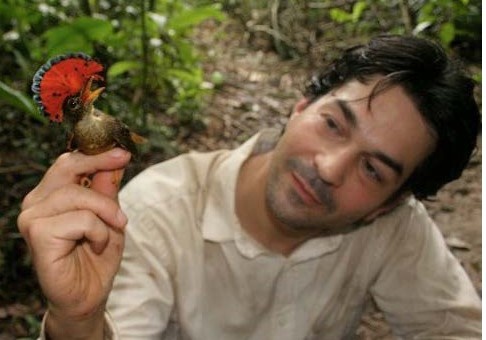
Biological Sciences Department
College of Natural Sciences and Mathematics
Dr. Martinez handling a Royal Flycatcher
Why do different bird species flock together?
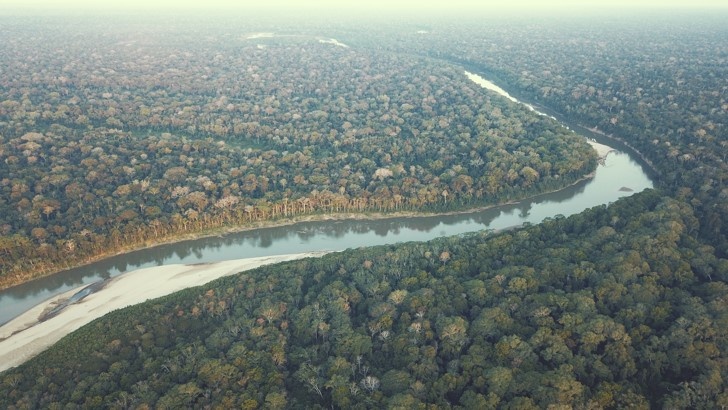
One reason is predators!
Now many of you may say, “makes sense, better to decrease the odds that you get picked off by a hawk swooping through by hanging out with a bunch of other birds” -what some behavioral ecologists call ‘the dilution effect.’ And in many cases, that is definitely true. In the Amazon, however, the answer is a little more complicated. It turns out that birds of different species actually ‘eavesdrop’ on one another.
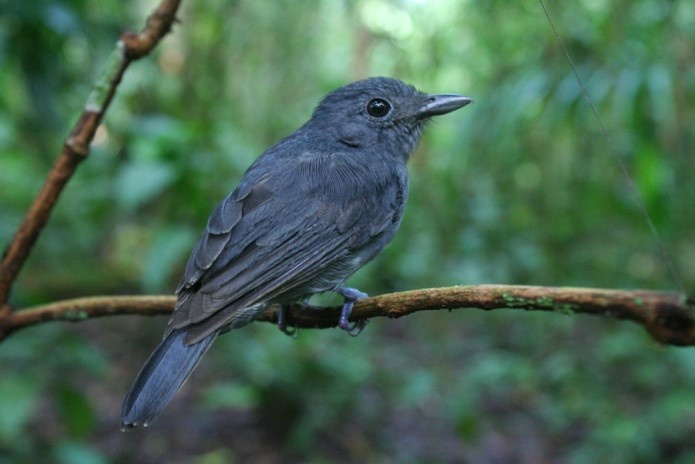
There are certain species of birds, called antshrikes, that sit up-right and look around for predators. When a forest falcon or hawk comes flying close, they give an alarm call that other species of birds in the flock recognize…….. when they hear that alarm call, it means “dive or freeze” or the grim reaper is about to pay you a visit in the form of talons from a Barred Forest-Falcon.
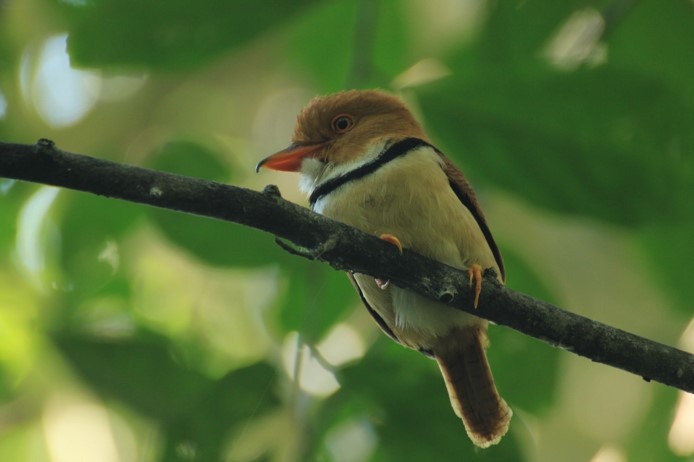
And yet there are so many different bird species that have different shapes and sizes and that behave in different ways, so why do birds give alarm calls and others do not?
And why do certain bird species pay attention to alarm calls why others do not?
These are the questions my research aims to address. In fact, things are now just getting more interesting - it’s not just birds in flocks that respond to these alarm calls but also other birds in the forest, and my colleagues and I now have evidence that small primates called saddle-backed tamarins also pay attention to these alarm calls of flocking forest birds.
It looks like certain bird species may be “key information providers” about social information that everyone else relies upon. In fact the next question is “How extensive are these eavesdropping communication networks in the forest?”
The more different animals have in common with regards to either food or predators, the more likely they are to eavesdrop on each other. The next facet of my research program will try to understand how extensive these communication networks are throughout the forest and animal communities in general. By understanding these communication networks in diverse bird communities I aim to understand some of the behavioral mechanisms that may explain how different species interact and once we undertand how these species interact, we may then start to make predictions of how changes how forest degradation through logging may ultimately affect bird communities.
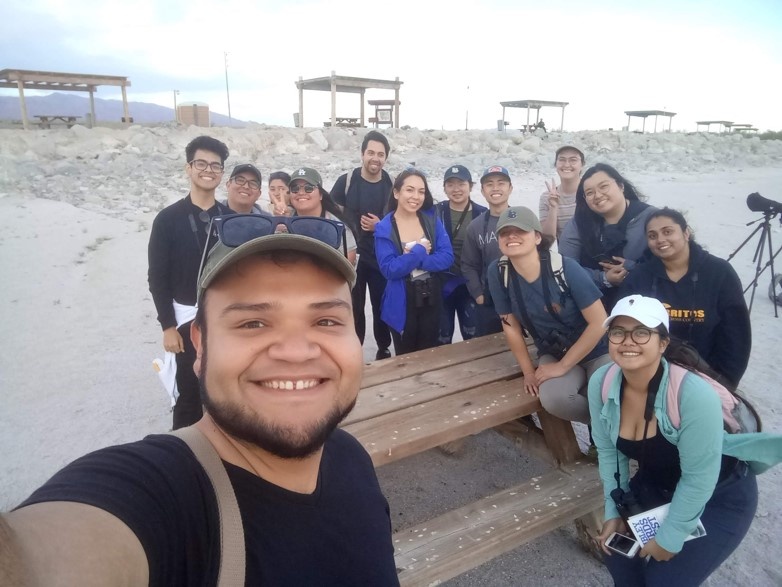
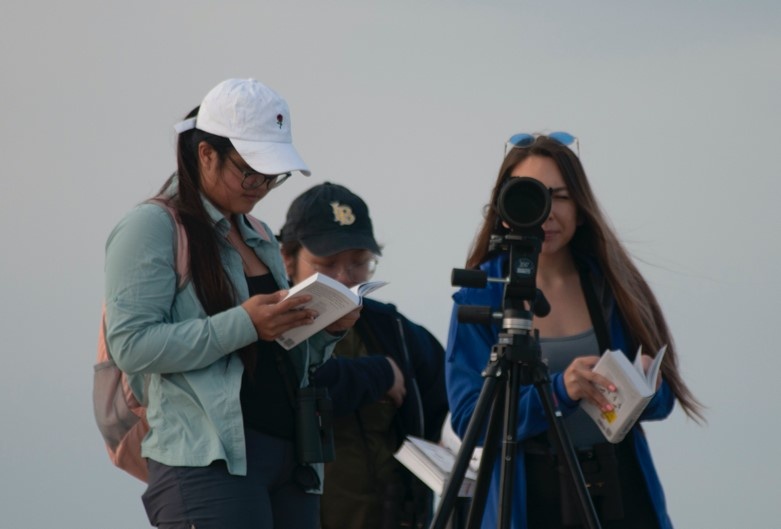
CSULB students identifying bird species during a field lab.
I am very excited to start recruiting CSULB students to join my lab, and in teaching ornithology. I aim to recruit the next generation of researchers to continue to address these questions with conservation implications. Stay tuned as a new generation of CSULB researchers will provide some answers to these questions over the next several years.
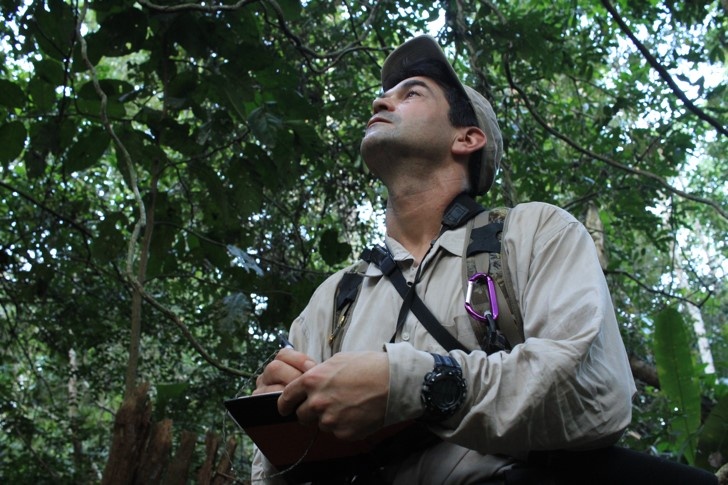
Avian ecologist, building up his neck muscles,
while taking down notes of birds in the rainforest canopy.
Images courtesy of Ari Martinez
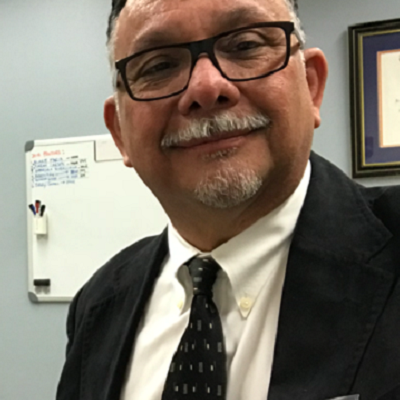
Speech Language Pathology Department
College of Health and Human Services
The Effect of Mild to Moderate Untreated Hearing Loss on the Quality of Life of Seniors
Hearing effectively is not like having good vision. Hearing is more like your ability to read a good book. It requires stimulation like vision does, but it also requires complicated processing using specific rules of language, memorization, and decent attention skills. It's probably more cognitive than sensory and losing your hearing can have catastrophic results.
Dementia, anxiety, and even depression are now strongly linked to hearing loss.
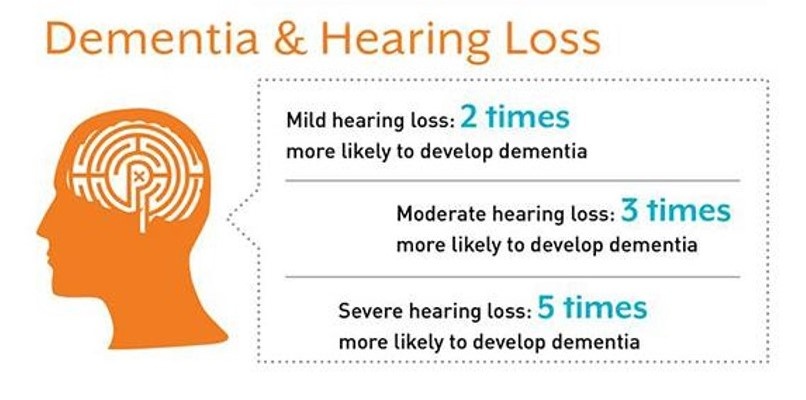
Several recent studies have shown that the more severe the hearing loss, the higher the risk for developing dementia.
As the only Audiologist on the faculty of CSULB, I am always looking for ways to serve the campus and community with regards to hearing. In a recently funded research project, I recruited students from the Gerontology Department to assist with screening for hearing loss and to interview participants during the investigation. I was also fortunate to have the opportunity to collaborate with Dr. Iveris Martinez, the Archstone Foundation Endowed Chair in Gerontology and Director of the Center for Successful Aging.
This project was funded through a CHHS Systematic Innovations in Servicing the Needs of Older Adults grant from CHHS and the Center for Successful Aging. This ongoing study is being done at the American Gold Star Manor (AGSM) in Long Beach. AGSM is a unique independent living facility for older adults in that the residents are connected directly to the military either as veterans or indirectly through their children who were killed in combat.
Hearing impairment has many negative consequences in older adults, including increased isolation from their community and cognitive decline. The primary purpose of this project was to examine the impact of untreated hearing loss in individuals 60 years of age and older. I wanted specifically to see how they would benefit from using low-cost personal sound amplifying products (PSAPs). These devices cost a fraction of what most individuals pay for custom hearing aids. I also wanted to investigate what effect these over-the-counter devices would have on the quality of life of these individuals.
How hearing loss contributes to diminished social interaction and cognitive decline is not well understood; however, a strong correlation between untreated hearing loss and the quality of life emphasizes the importance of early identification and management.
Residents from AGSM were supplied with low-cost PSAP devices. We are investigating the benefits of their use in these community-dwelling older adults. We wanted to see what impact these discreet inexpensive devices would have on the quality of life of these individuals.
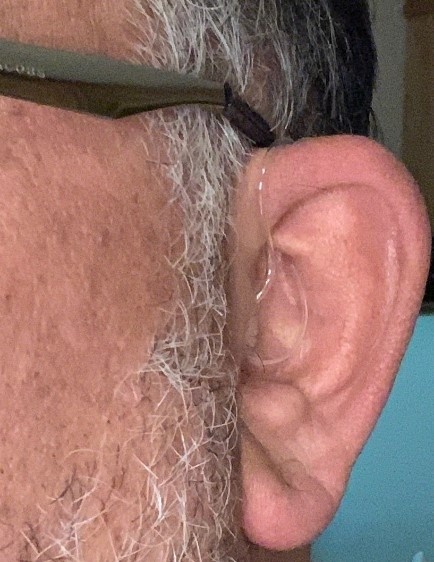
I am also trying to raise awareness on the importance of treating even mild age-related hearing loss (ARHL) and how better hearing can influence the quality of life and decrease social isolation in this population. I hope to demonstrate the importance of having access to these devices that can decrease the effects of hearing loss. Preliminary data has been collected and is currently under review.
Images courtesy of Edward Garcia
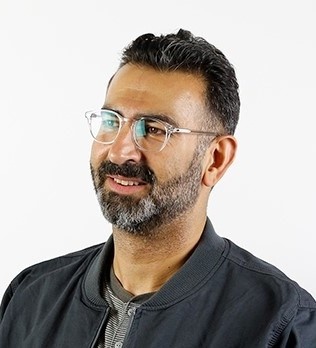
School of Art
College of the Arts
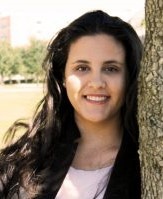
Department of Psychology
College of Liberal Arts
Art & Psychology Research to Improve Technology for Vets with Spinal Cord Injuries and Disorders
We began collaborating on this research project to help veterans with spinal cord injuries and disorders at our local VA Hospital in Long Beach. Given their selfless service and sacrifice, we, like our partners at the VA, believe our veterans deserve the very best in healthcare treatment and resources.
Consequently, we have combined our expertise in human factors psychology, graphic design, and user experience to improve the usability of Environmental Control Units (ECU) at the VA Long Beach Spinal Cord Injury and Disorders (SCI/D) Center. Our multidisciplinary team consists of two professors, eight graduate students in the Human Factors Master’s program in the Psychology Department, and undergraduates from the Department of Biological Sciences and the College of Health and Human Services.
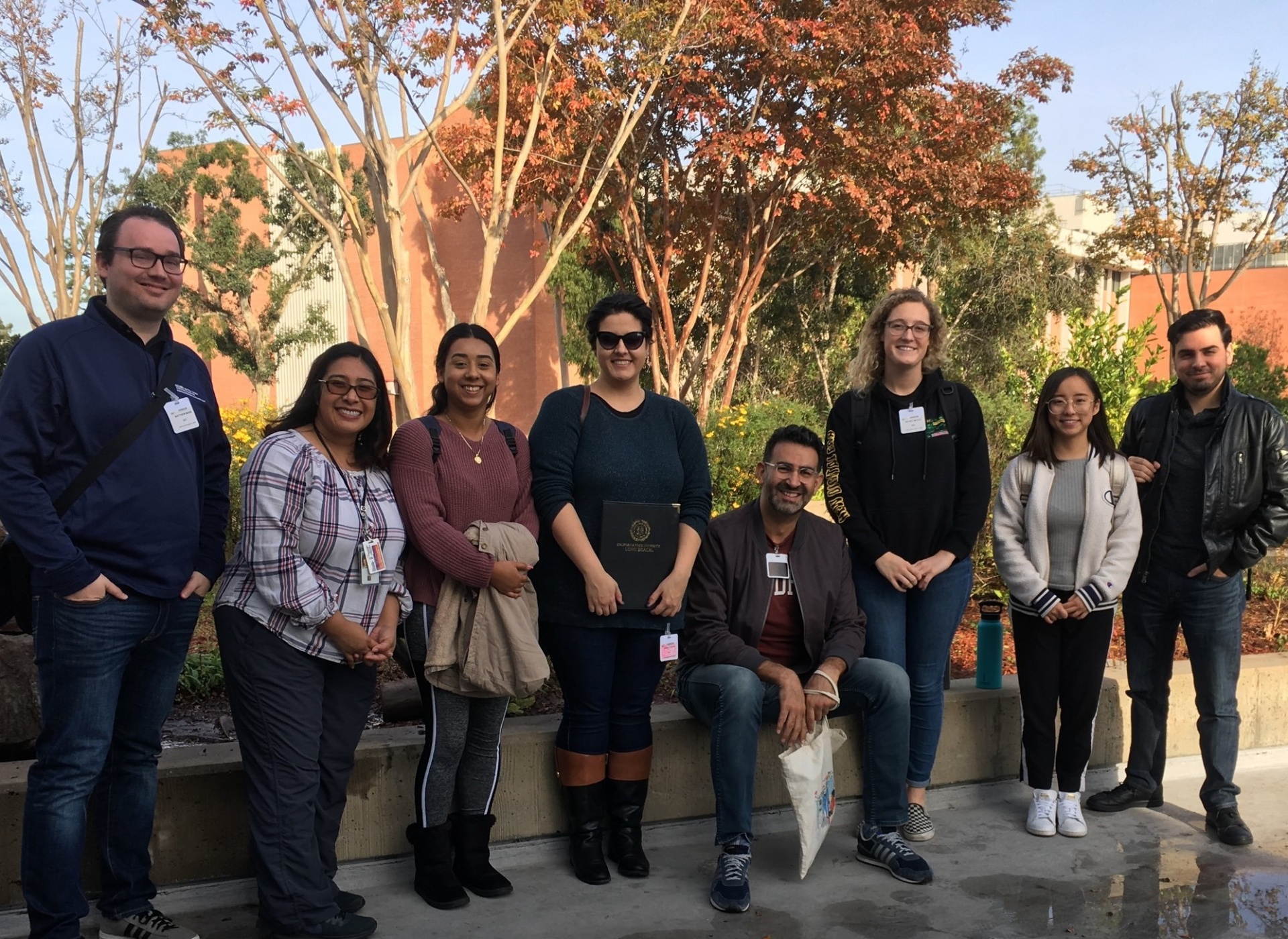
CSULB and VA Hospital Research Dream Team. (L-R): Matthew Nare, Janice Ancheta Kim, Natalia Morales, Dr. Gabriella Hancock, Sam Anvari, Kelsey McCoy, Xiaolu Bai, and Aram Ayvazyan.
Our efforts are centered on a vital piece of technology that significantly affects SCI/D veterans’ daily lives: an ECU. This device, similar to a digital tablet, is designed with specific functionality for patients who are fully or partially paralyzed. The device facilitates the user’s completion of common and important tasks, such as: calling the nurse, making phone calls, controlling elements of the care room, adjusting bed position, watching TV, and accessing the internet. This device is used by our veterans for both in-patient and out-patient care. Past evaluations of these ECU technologies have revealed significant usability concerns. The goals of our research are therefore to analyze the current usability of ECUs, identify usability issues through heuristic evaluations and user interviews, and provide concrete, data-driven guidelines to improve their design. Through these efforts, we expect to improve both the usability and user experience of these technologies and thereby foster the independence of our veterans.
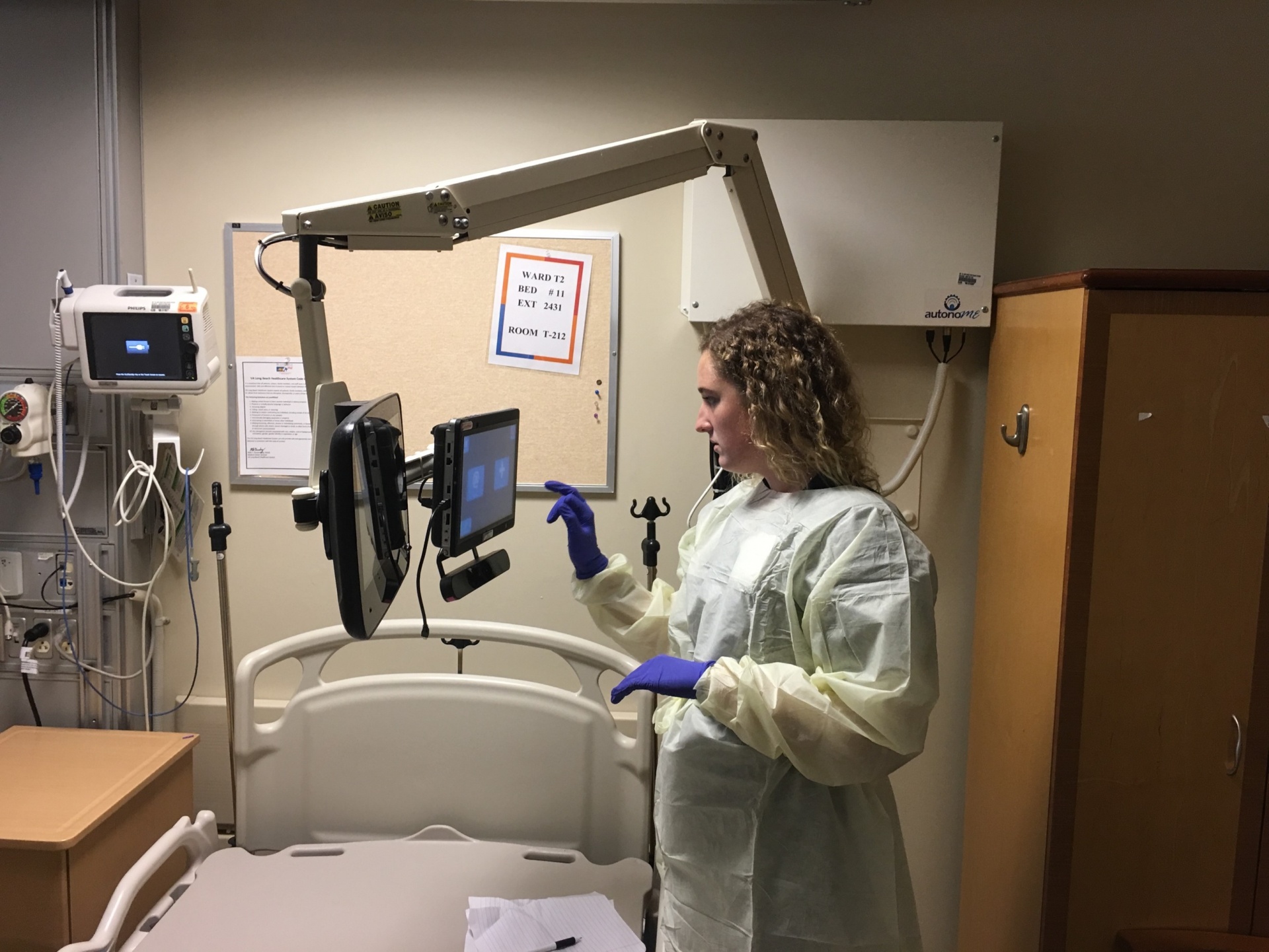
Human Factors Psychology graduate student Kelsey McCoy interacts with the ECU touch-based interface.
We are currently performing heuristic evaluations on the different modes of use for the ECU device with our team of students. These analyses help us to understand how we can improve the design of the device. Our next step is to coordinate with the VA Hospital to conduct interviews with actual end-users (veterans and their caregivers) to gain further insight into how well the system currently helps them to meet their needs as well as how they feel the system could be improved. Finally, based on our results and veterans’ input, we will re-design the ECU digital interface to be more effective and user-friendly. Our ultimate goal is to leverage our knowledge of art and psychological science to improve the quality of life for our veterans.
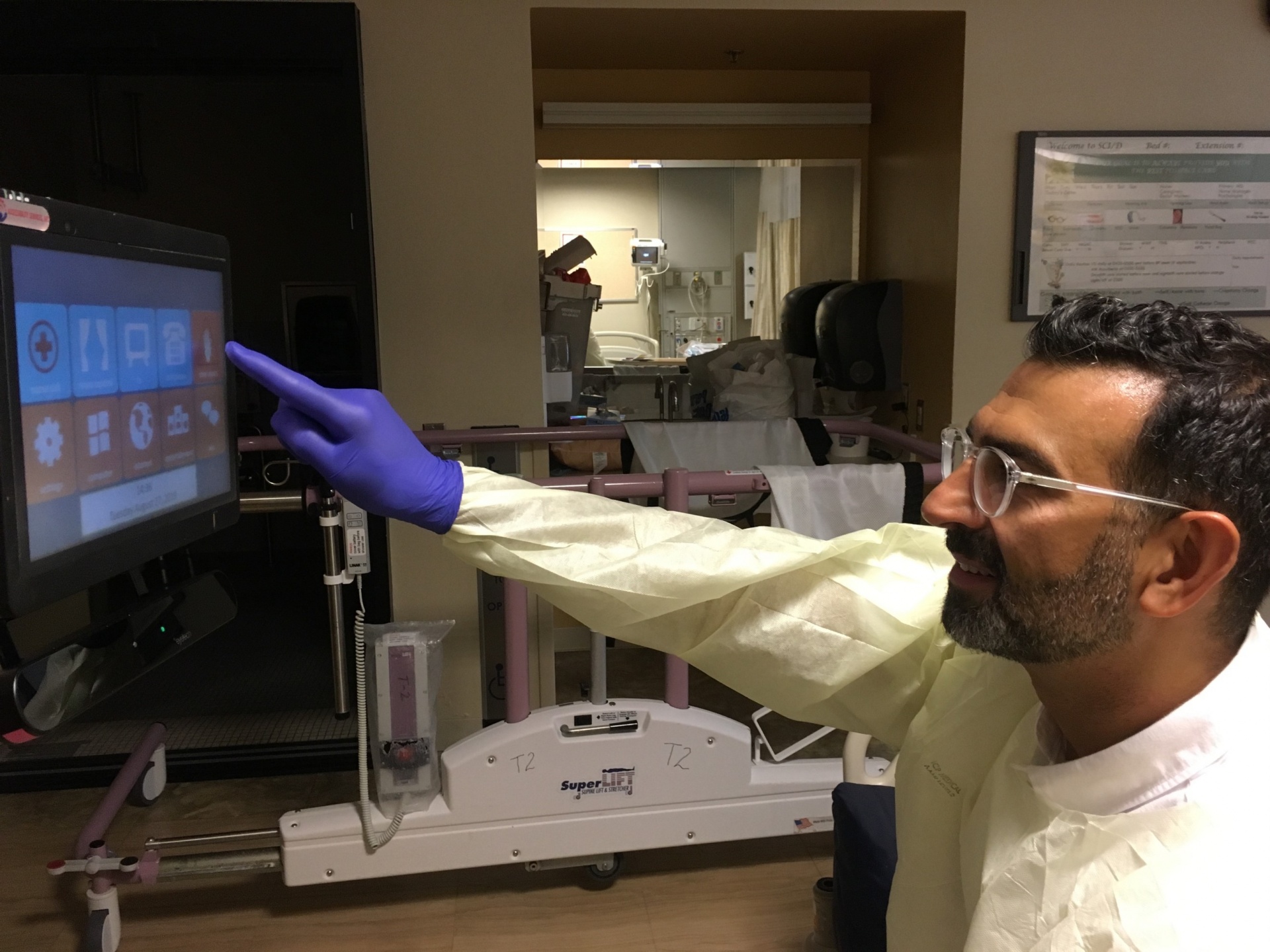
Assistant Professor of Art Sam Anvari performs a heuristic evaluation on the ECU touch system.
OUR TEAM
Department of Psychology
Dr. Gabriella M. Hancock,
Nicole B. Mok, Aram Ayvazyan, Xiaolu Bai,
Kelsey M. McCoy, Matthew T. Nare, Gregory P. Mather,
Carmen L. Machado, Rebecca M.E. Chompff
School of Art
Sam S. Anvari
College of Health and Human Services
Amanda S. McBride
Department of Biological Sciences
Natalia Morales
Images courtesy of Sam Anvari

Department of Finance
College of Business
No More Hidden Trading, Please!
A decade ago, during the 2007-08 financial crisis, former Fed Chairman Ben Bernanke was angry. He had to bail out AIG (American International Group) with more than $180 billion, because it was too big to fail. Among other things, AIG was not able to make payment for the CDS (Credit Default Swap) contracts that they wrote at the time for the amount over $400 billion.
The CDS contract is a financial instrument in which the buyer of a CDS makes periodic payments until maturity date, and the seller collects the payments and will compensate the buyer in the event that the underlying company defaults. The buyers are mostly the corporate bond holders and thus need CDS to protect their portfolios. The sellers are typically large financial institutions, such as banks and insurance companies.
The CDS is traded OTC (over-the-counter), meaning that there is hardly any regulation oversight and no one really understands how much risk is out there. No transaction-level data goes to regulators or participants. AIG seemed to have a preference for only one side of the trade - the seller. The company considered it a no brainer to collect premiums to boost profit margins, until it was not. When companies started to default one after another during the 2008 financial crisis, we know the rest of the story.
In the aftermath of the financial crisis, several changes were introduced in the CDS market. In 2009, the G20 leaders called for global improvements in transparency and regulatory oversight of OTC derivatives via a move towards central clearing and trade reporting to repositories.
It is no surprise to see several policy changes, including the Dodd-Frank Act (DFA) passed in 2010. Title VII of DFA addresses the gap in U.S. financial regulation of OTC swaps by providing a comprehensive framework for the regulation of the OTC swaps markets. Today, people are asking, what is the impact on the mechanism of derivatives market?
With my expertise in credit derivatives and risk management, I completed a paper titled,“The Impact of Central-Clearing on Information Asymmetries and Price Discovery in CDS Markets”. In this paper, I find that the CDS market has become less of a “hidden” trading venue for informed investors since central clearing and trade reporting started. It has been circulated in many national and global conferences, including in the U.K. Financial Conduct Authority (equivalent to U.S. SEC), Research Seminar International Risk Management Conference (IRMC), Midwest Finance Association, and Financial Management Association Annual Meeting. The paper is now published at Journal of Financial Stability.
We need regulation that is necessary to stabilize the financial market, especially in the downturn.

Images courtesy of Lu Zhu
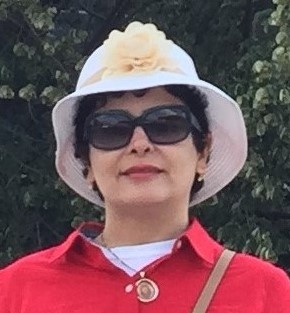
Electrical Engineering Department
College of Engineering
Improving Mobile Communications Used in a Multitude of Ways
My research is about making communication systems more reliable, faster, and more secure. Communication systems are widespread in our daily lives, including 5G mobile communications, WiFi, satellite communication, etc. The outcomes of my research find many applications, e.g., in remote healthcare, vehicular communications (which is especially important for autonomous cars), smart cities, etc.
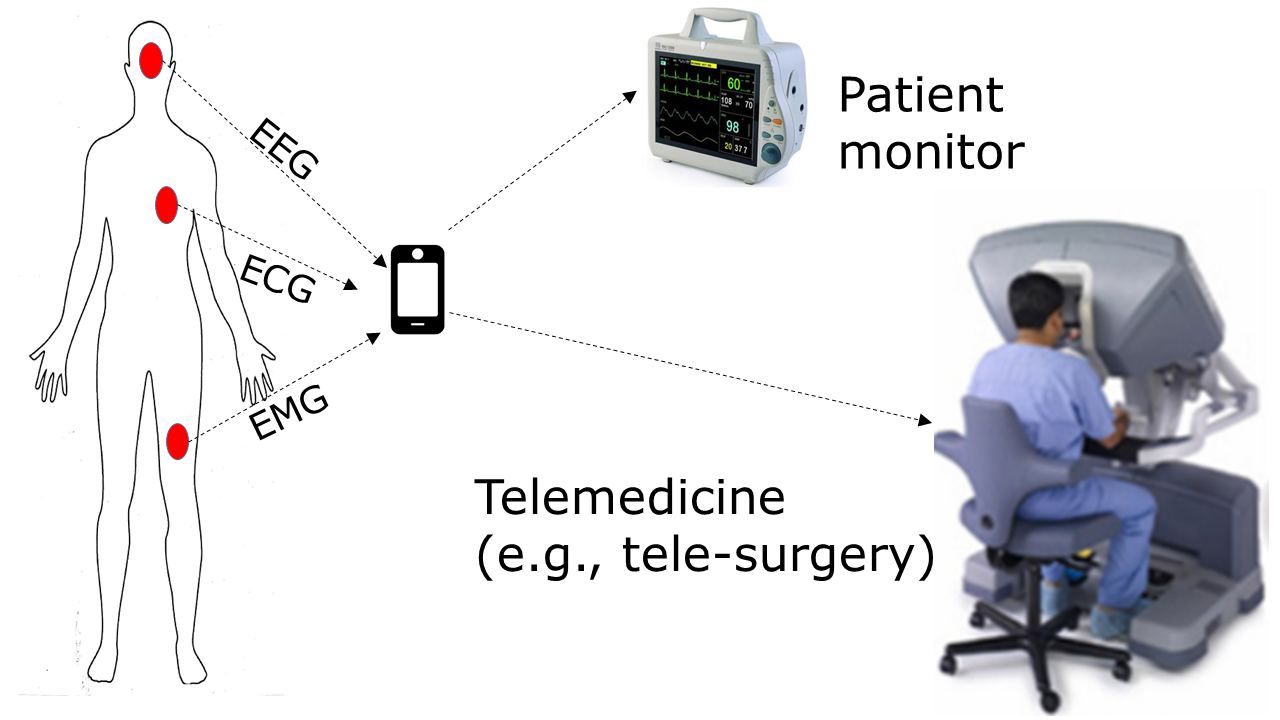
One of the many applications of my research is in connected healthcare.
Wireless communications are resource constrained. For example, the transmission power on your cell phone cannot exceed a certain limit. In my research, I have addressed power efficiency of wireless communications.
Another scarce and precious resource for wireless communication is spectrum. Electromagnetic spectrum is a limited resource that is needed by many applications. So far in cellular networks, from 1G to LTE-Advanced, users have been assigned exclusive resources, either in time, frequency, or code domains to keep interference and receiver complexity under control. However, such techniques suffer from low spectral efficiency and they can only support a limited number of users.
In my research, I have tackled the spectrum scarcity by spectrum sharing methods. I have used game theory to model interactions among communication nodes (similar to interactions among players) to increase the security of communication systems. I have also worked on device scheduling. All these need to be done with the goals of maximum throughput, reduced delay, decreased bandwidth consumption and other constraints.
Delay is a barrier against faster communications. Artificial intelligence and machine learning can help reduce the delay in mobile cellular systems. The premise for these techniques is integrating intelligence and learning to make more informed predictions and decision.
Most of you have noticed that the amount of data you download from the network (e.g., movies) are different from what you upload from time to time. I work on adapting the communication links to these traffic variations. The benefits of adapting resources to the variations of users’ data traffic include faster, more reliable, and more resource-efficient connectivity.
For future generations of mobile communication (e.g., beyond 5G) it is anticipated to accommodate several users within a resource block as opposed to the orthogonal multiple access in current systems. My research identifies fundamental approaches to efficient and stable non-orthogonal resource allocation. Specifically, I am modeling the underlying structures of this scheme. If we have a model for it, our solutions are not going to be based on heuristics only. I investigated the guarantees to converge to stable solutions for user-channel allocations.
To provide security of data communication, I have worked on preventing a warden from detecting that any communication is taking place between two legitimate parties. With this goal realized, the warden does not even attempt to decode the private message.
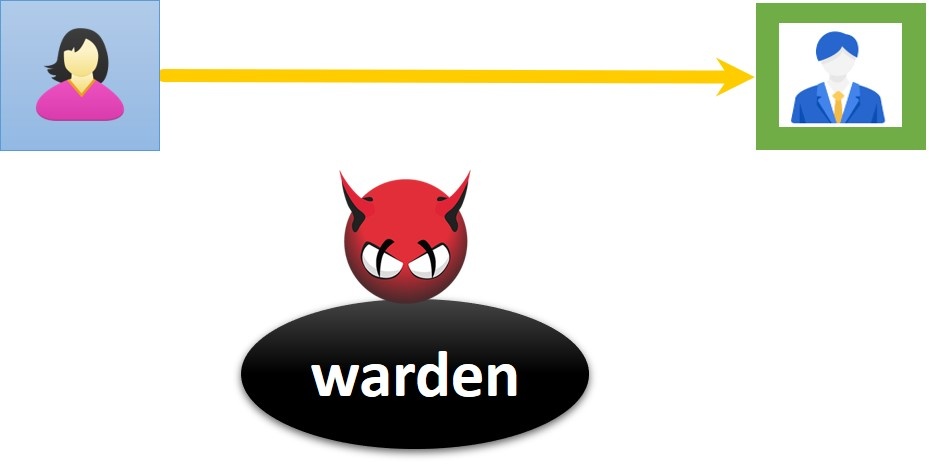
Once the warden is left oblivious about any communication taking place, it does not attempt to decode the messages.
Images courtesy of Shabnam Sodagari
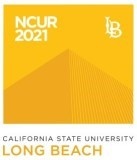
Research is Coming to the Beach
Save the dates: April 1 through April 3, 2021.
Cal State Long Beach will serve as host for the 2021 National Conference on Undergraduate Research (NCUR) that promotes undergraduate student research, scholarship and creative activity in all fields of study.
Through this annual conference, students experience a unique environment that celebrates and promotes undergraduate achievement, exemplary research and scholarships, and offers research networking on a national scale.
Cal State Long Beach will partner with Cal State Fullerton, Cal State Dominguez Hills, Cal State Los Angeles, Cal State Northridge, and Cal Poly Pomona for the annual student research event that attracts more than 4,000 students from across the United States.





